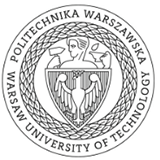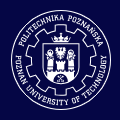Introduction
Poznan University of Life Sciences is located in Poznan on the Warta River in central-western Poland. It is a higher education institution founded in 1870 and the second largest public university in the field of agriculture in Poland.
Overview
Number of students: more than 12,000 undergraduate students and more than 1,200 graduate students.
Number of faculty and staff: more than 820 faculty and staff, including 850 full-time teachers and 151 professors.
History
In 1919, the predecessor of Poznan University of Life Sciences, the Faculty of Agriculture and Forestry, was established as part of Adam Mickiewicz University.
In 1951, the Faculty was separated from Adam Mickiewicz University and became an independent higher education institution.
On April 11, 2008, it officially obtained university status and was renamed Poznan University of Life Sciences.
School Strength
Faculty: 850 full-time teachers, including 151 professors Most of the teachers have profound academic attainments and rich teaching experience in their professional fields, and can provide students with high-quality education and guidance.
Scientific research results: The school has carried out extensive and in-depth research in the fields of life sciences such as agriculture, forestry, biotechnology, and food science, and has achieved a series of important scientific research results, making positive contributions to promoting the development of related fields.
International cooperation: Actively participate in international exchanges and cooperation, and has joined the EU Erasmus exchange student program and the Leonardo da Vinci program, and has established friendly cooperative relations with many foreign universities, such as the Vienna University of Technology in Austria, the Dresden University of Technology in Germany, and the University of Aberdeen in the United Kingdom.
Institutional nature
Public university.
Educational philosophy
Committed to cultivating professional talents with innovative spirit and practical ability, focusing on combining theoretical knowledge with practical application, emphasizing interdisciplinary cooperation and exchanges, so as to cultivate students' ability to solve complex problems, promote sustainable development in the field of life sciences, and contribute to social and economic development.
Key laboratories and disciplines
Key laboratories: The school has a number of advanced laboratories and research centers, which provide good conditions for scientific research and teaching, but no clear information about the specific key laboratories has been found.
Key disciplines: Agronomy, forestry, animal science, food science and nutrition, environmental engineering and other disciplines are at the leading level in Poland. Among them, agriculture and food, forestry, wood technology and other majors have a high level of teaching and research.
Faculty
It consists of the College of Agronomy, the College of Forestry, the College of Animal Reproduction and Biology, the College of Wood Technology, the College of Horticulture, the College of Food Science and Nutrition, the College of Economics and Social Sciences, the College of Land Reclamation and Environmental Engineering and other academic units.
Ranking
2023 CWTS World University Ranking: 521-530.
2022 QS Emerging Europe and Central Asia Ranking: 114.
Expenses
The tuition fee for the English-taught master's program is 1,400 euros per semester. Most courses are one and a half years (three semesters) long, with a total tuition fee of 4,200 euros.
Campus
Location: Located in the historic city of Poznan, Poland, the city is an important industrial, transportation, cultural and educational and scientific research center in Poland, providing students with abundant internship and employment opportunities.
Campus environment: The campus environment is beautiful, with a "green university" The school has a good reputation and provides students with a good learning and living environment.
Campus facilities: The school has complete teaching and scientific research facilities, including modern teaching buildings, laboratories, libraries, student dormitories, etc., to meet the students' learning and living needs.
-

Warsaw University of Technology
-

Poznan University of Life Sciences
-

Wroclaw Medical University
-

Nicolaus Copernicus University
-

University of Warsaw
-

AGH University of Science and Technology
-

Silesian University of Technology
-

Poznan University of Technology
-

Jagiellonian University
-

Adam Mickiewicz University
-

Mesoamerican University
-

Istmo University
-

Mariano Galvez University of Guatemala
-

Regional University of Guatemala
-

Galileo University
-

Francisco Marroquín University
-

Rafael Landívar University
-

University of the Valley of Guatemala
-

University of San Carlos of Guatemala
-

Technological Institute of Tlaxcala Plateau
-

Golfo University
-

Technological University of South Sonora
-

Technological University of Huejotzingo
-

Tizimín Institute of Technology
-

Chilpancingo Institute of Technology
